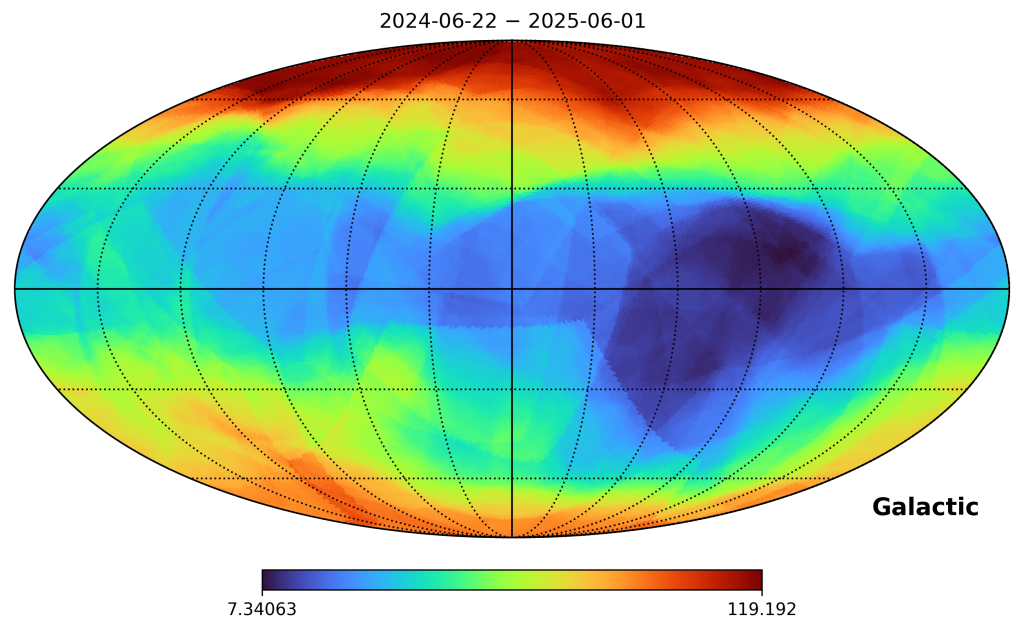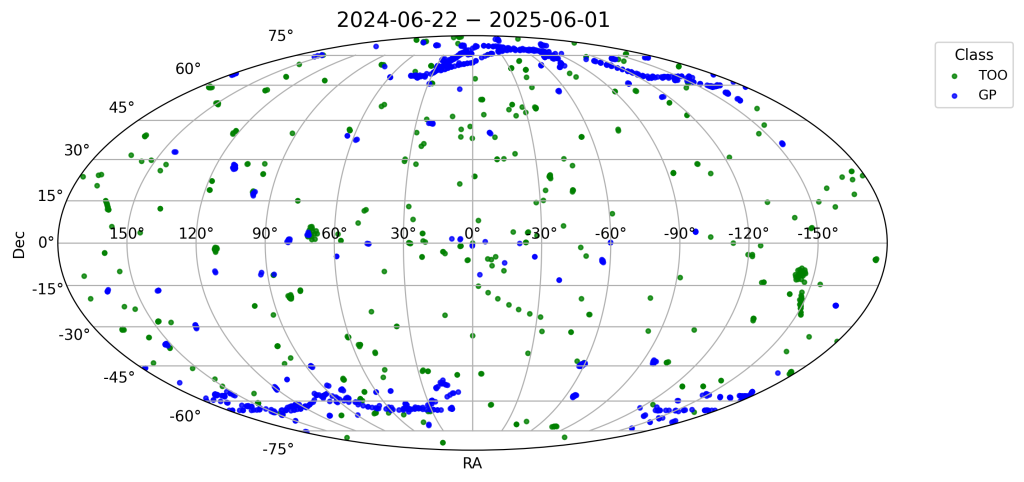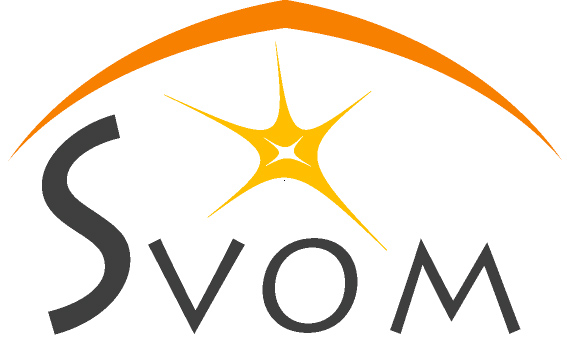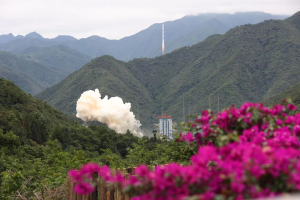Happy Birthday, SVOM!
22 June 2025 marks the first anniversary of the SVOM satellite in orbit. One year ago, the satellite was launched from the Xichang base in China at 07:00 UTC. Following the launch, the subsequent phases took place:
- in-orbit commissioning phase from late June to late September 2024: commissioning of all platform functions and gradual activation of the instruments;
- validation phase from October 2024 to mid-January 2025: adjustment of system parameters, instruments, and scientific calibration;
- from mid-January 2025 onwards: start of the scientific operations phase.
The map below shows the exposure time of different regions of the sky (in galactic coordinates) during this first year for the ECLAIRs telescope. The most exposed regions are the galactic poles, in line with the planned SVOM attitude law.

The map below shows the pointing directions of the platform during this first year (in galactic coordinates). The colours indicate the nature of the pointings:
- in blue: general programme pointings, observing predefined areas of the sky while awaiting potential gamma-ray bursts;
- in green: target of opportunity pointings, observing known astrophysically interesting targets.
In total, SVOM devoted 35% of its available time to observing targets of opportunity, with half of that time spent revisiting gamma-ray bursts to build their visible light curves using the VT. Over two-thirds of these revisits were conducted for SVOM-detected bursts.

Thanks to the observing strategy applied this first year, SVOM successfully detected and observed 132 bursts, including:
- 111 detected by GRM;
- 47 detected and localised by ECLAIRs;
- and among these, 89 were also detected by other missions (Einstein Probe, Neil Gehrels Swift Observatory, Fermi).

Thanks to the responsiveness of the SVOM system and its teams, and the excellent multi-wavelength follow-up from our partners, around fifty gamma-ray bursts were observed in soft X-rays, about thirty in visible light, and redshift was successfully measured for 26 events. In particular this year:
- ECLAIRs detected its first burst on 13 July 2024;
- a very particular burst rich in soft X-rays was detected on 1 October 2024 and observed by the James Webb Space Telescope;
- the burst detected on 5 February 2025 is a perfect example of the SVOM system in action;
- a particularly distant burst was detected on 14 March 2025;
- GRB 250403A, proof of the phenomenal power of gamma-ray bursts;
- SVOM teams were honoured and awarded during China’s “Space Day” on 24 April 2025.
The results of this first year speak for themselves. Detections and observations by SVOM and its partners have generated over 900 scientific circulars. The next step is to continue fine-tuning the mission and instruments. Meanwhile, a series of scientific publications is being prepared to formally present these results to the scientific community.
Happy Birthday SVOM, and congratulations to all the teams!



